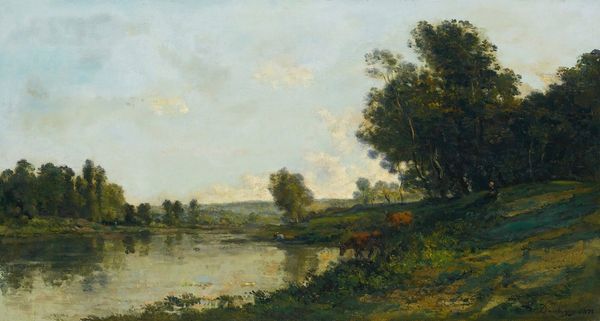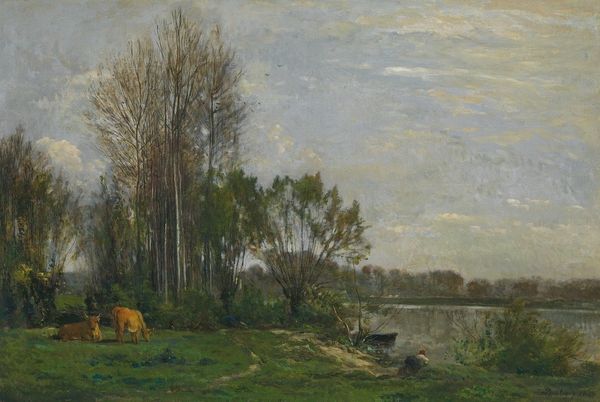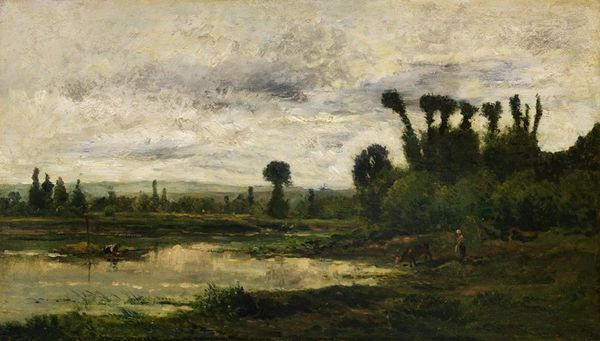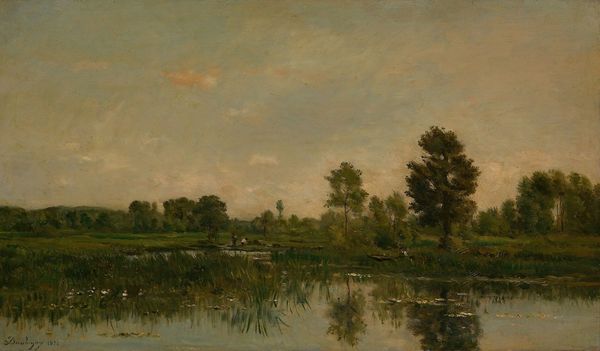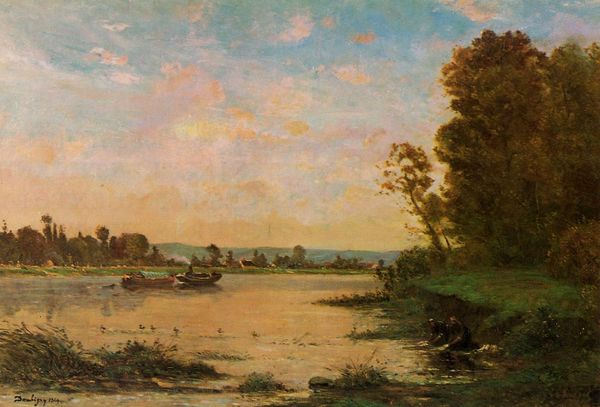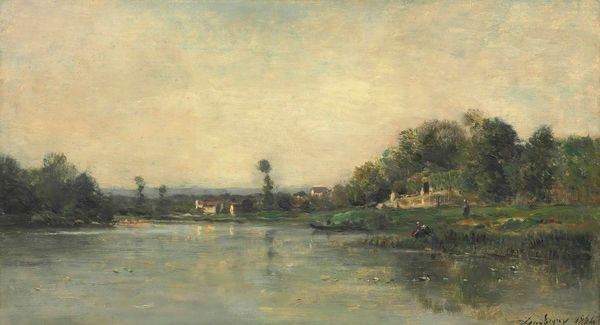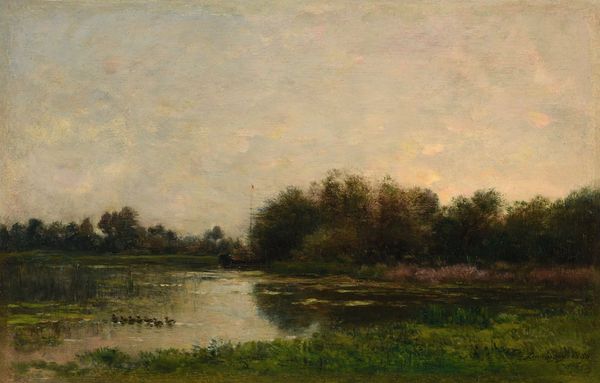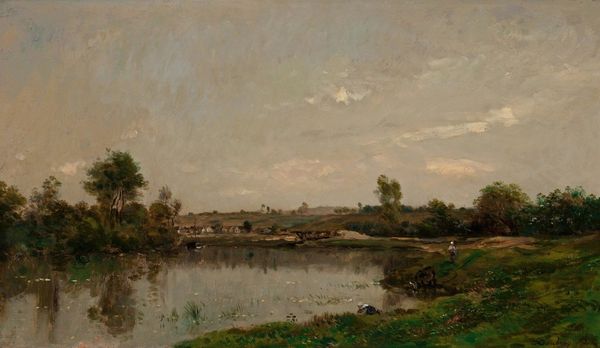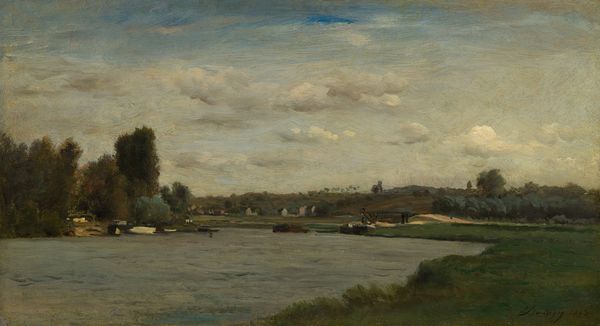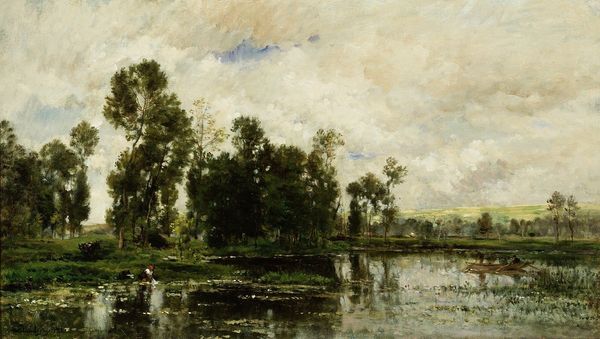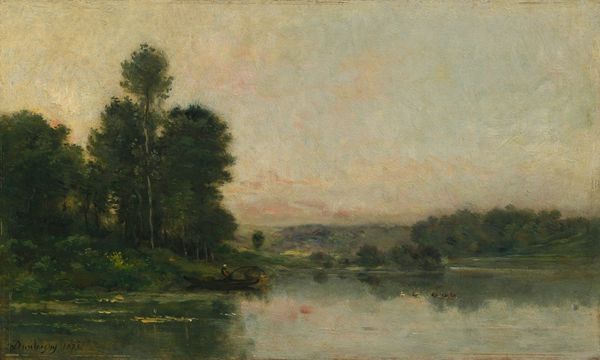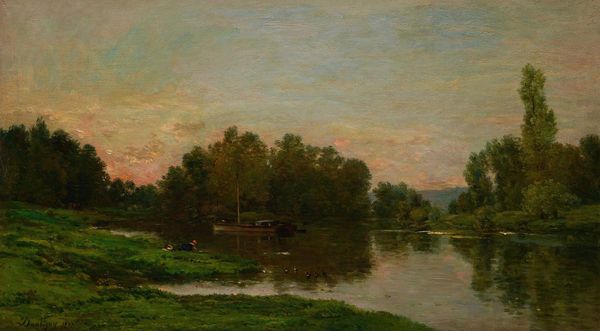
Copyright: Public Domain: Artvee
Curator: I find myself drawn to the quiet stillness in this "Landscape on the Oise," completed by Charles-François Daubigny in 1872. The light has this soft, diffused quality...a quiet melancholy hangs in the air. What is your immediate impression? Editor: A calm but observant painting. The placid river seems to mirror the somewhat overcast sky, really emphasizing the ordinariness of the scenery, almost mundane...which probably wasn’t by accident. Curator: Right. And thinking about Daubigny's context – he worked outside traditional studio settings, prefiguring plein-air painting, trying to depict his immediate experience of nature in a manner influenced by early Impressionism. It seems very intentional here that the figures are just staffage - their being women could potentially highlight something about labour and work on the margins in that era. Editor: I wonder, do you think this work responded to a broader desire to engage with the countryside that developed within urban, bourgeois society at the time? After all, it was shown, bought and valued mostly in a booming, industrious urban context that romanticised nature as an idyllic antithesis. Curator: Yes, definitely. His ability to make scenes appear simultaneously ordinary and ideal is central. Considering also the trauma and political realignments during the Franco-Prussian War – during which Daubigny took refuge in England – could be mirrored in the seemingly calm representation of French terrain. Editor: Interesting angle; certainly, that period fostered significant shifts in power and class. This reminds me of debates at the time around urban planning: nature needed to be conserved and integrated in the fabric of cities, where "nature" was always highly stylized for the use and leisure of the well-to-do. Curator: Exactly, a curated and sanitised experience of nature to be sure! Perhaps these paintings responded to these contemporary challenges and anxieties and served an escapist, nostalgic function. Editor: Well, after considering it more fully, the canvas does raise questions around what nature representations have come to represent beyond landscape: political agency, societal concerns, even a form of proto-environmentalism. Curator: Indeed! There's so much to unpack in its serene appearance. Thank you for those reflections.
Comments
No comments
Be the first to comment and join the conversation on the ultimate creative platform.
